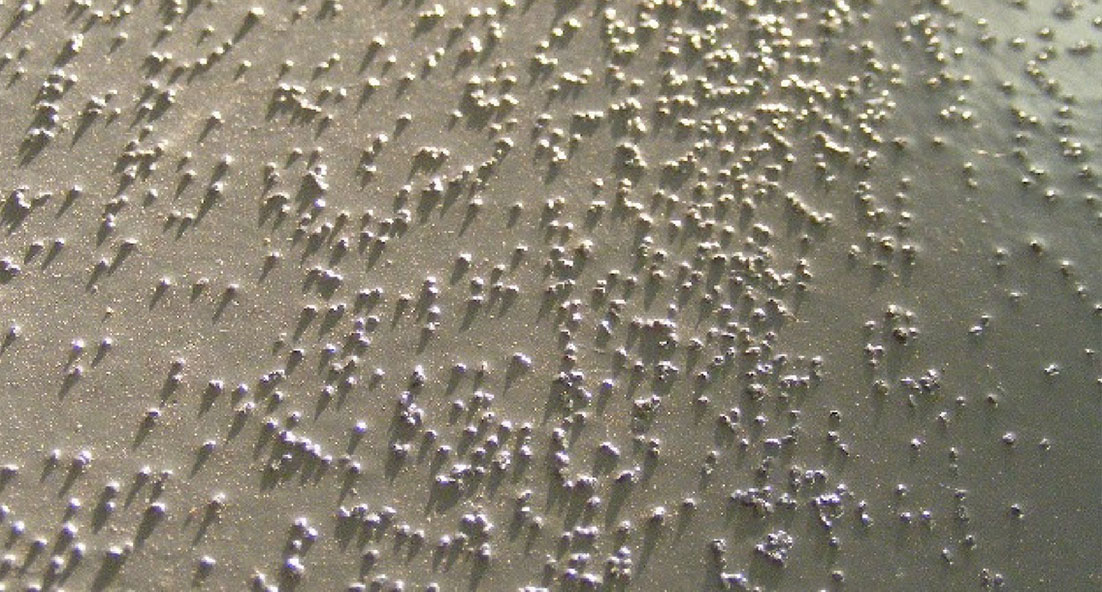
When selecting your floor paint, it is important to know the difference between a ‘Non-Slip’ paint and a ‘Slip Resistant’ paint. Whilst it could be argued that they both mean the same thing, it is generally agreed within the trade that a ‘non-slip’ paint is more aggressive than a slip resistant paint. The more ‘slip resistant’ the paint, the easier it will collect the dirt and the harder it is to clean.
A ‘Non-Slip’ surface can have anything from 2 times to 10 times as much aggregate as a ‘slip resistant’ coating would have. So in order to achieve a truly non-slip surface, we recommend that you cover the surface with 2kgs of aggregate per square metre. Alternatively, to achieve a slip resistant surface, you can add just 0.5kg of aggregate to a 5L unit of paint covering a total of 30 square metres.
5 important considerations when purchasing your paint and aggregate:
- The applicator must decide upon the amount of aggregate to add to achieve the amount of slip resistance required.
- A lot of people do not need a slip resistant surface everywhere and can, therefore, determine each area differently. For instance, in a factory, it may only be a sink or machine. When used on a staircase, it may only be used around the nosing of the step. It is not recommended to apply a non-slip paint under a sink or machine as this could make your cleaning routine far harder to maintain.
- The benefit of only broadcasting the aggregate exactly where you need it is that the paint is effectively exactly the same colour throughout.
- The size of the aggregate can also be altered.
- The colour of the aggregate can also be varied from a contrasting or decorative colour to a clear aggregate for areas where the existing appearance is not distorted/altered.
While aggregates are normally supplied in ‘Non-Slip Paints’, the aggregate commonly used is a very dense polystyrene. This usually results in the non-slip floor losing it’s safety capabilities as quickly as three months after application. To combat this, we recommend using industrial aggregate and mixing it in with your chosen paint. Here’s how:
Mixing In The Aggregate
This is only really suitable when using fine aggregates of 0.5mm and under. The reason for this is that the aggregates have a tendency to sink to the bottom of the paint tin and therefore it is important that the product is not only thoroughly mixed in the first place but it is important to ‘dig deep’ with the roller into the paint tray in order to constantly agitate the coating and aggregate together.
The benefit of applying the coating this way is that one can achieve an even finish and with less aggregate over a much larger area. Furthermore. you can apply a finely textured surface that has a degree of slip resistance but also one that you can easily mop clean – especially ideal in the toilet, bathroom, kitchen and food preparation areas.
Broadcasting Aggregate By Hand
Although broadcasting the aggregate by hand is a very popular method, great care needs to be taken in order to achieve an even finish. Most people apply the aggregate from a quick swish of the hand similar to feeding the chickens. Done properly, this is extremely successful and is a fast way of accomplishing the task. We recommend that extra care is taken when spreading the aggregate around to make it as evenly distributed as possible.
If you prefer, you can use a much smaller handful and spread by applying it over a ‘big’ area in more than one application; spread a small amount over a large area and then apply more and more until the level of slip resistance is achieved.
Top Tips:
- When broadcasting the aggregate, make sure that this is completed whilst the paint is still wet. The following day, brush off any excess/loose aggregate and apply the second coat in order to encapsulate the aggregate. If the paint is allowed to dry before the aggregate is applied, the aggregate will simply not adhere and will brush off/fall out!
- If you would like the aggregate to be seen, apply the aggregate to the second/top coat instead. To use this method, it is important that you do have enough thickness of paint in order to hold the aggregate- the bigger the aggregate, the thicker the coating needs to be.
